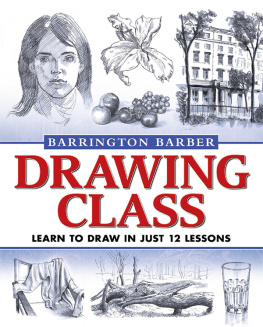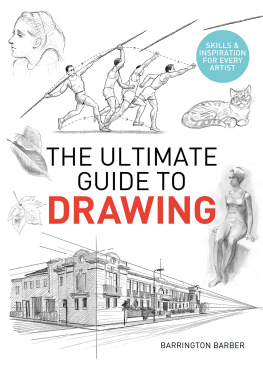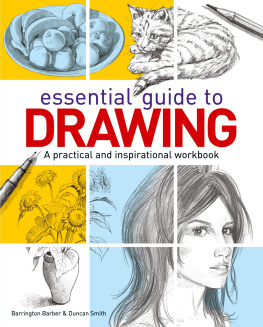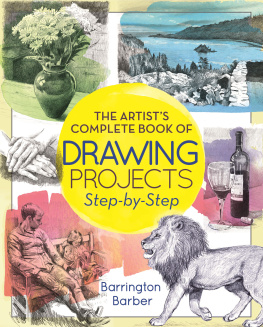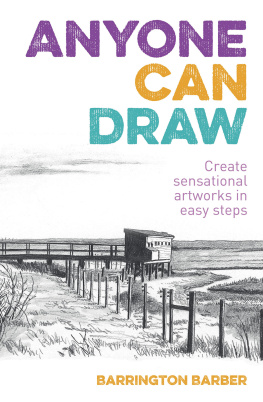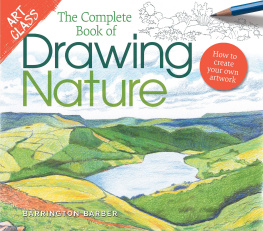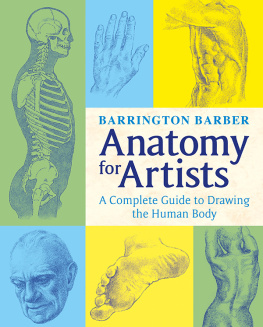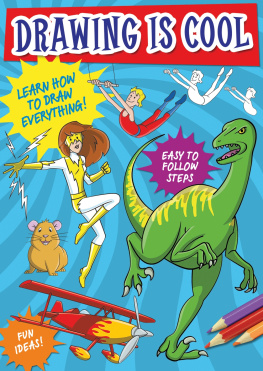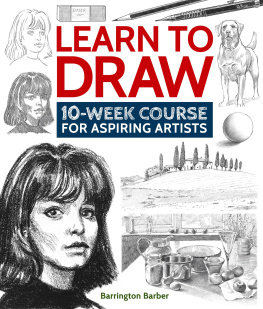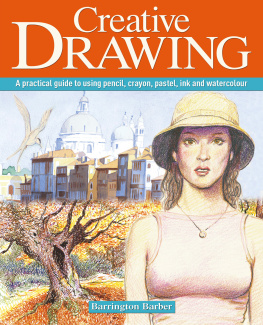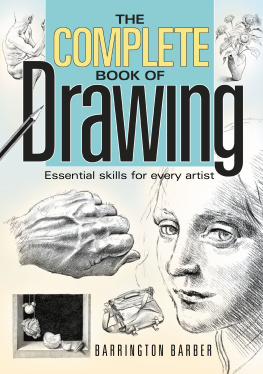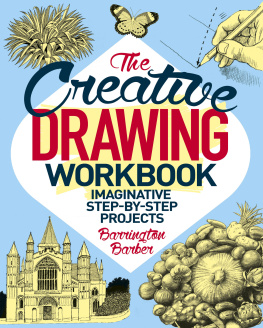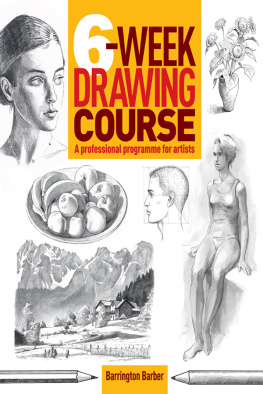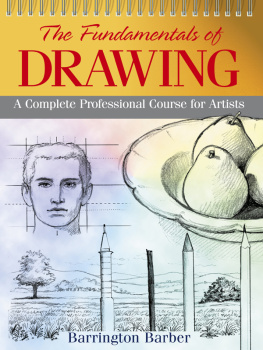Barrington Barber - Drawing Class: Learn to Draw in Just 12 Lessons
Here you can read online Barrington Barber - Drawing Class: Learn to Draw in Just 12 Lessons full text of the book (entire story) in english for free. Download pdf and epub, get meaning, cover and reviews about this ebook. year: 2015, publisher: Arcturus Publishing, genre: Art / Computer. Description of the work, (preface) as well as reviews are available. Best literature library LitArk.com created for fans of good reading and offers a wide selection of genres:
Romance novel
Science fiction
Adventure
Detective
Science
History
Home and family
Prose
Art
Politics
Computer
Non-fiction
Religion
Business
Children
Humor
Choose a favorite category and find really read worthwhile books. Enjoy immersion in the world of imagination, feel the emotions of the characters or learn something new for yourself, make an fascinating discovery.
- Book:Drawing Class: Learn to Draw in Just 12 Lessons
- Author:
- Publisher:Arcturus Publishing
- Genre:
- Year:2015
- Rating:4 / 5
- Favourites:Add to favourites
- Your mark:
- 80
- 1
- 2
- 3
- 4
- 5
Drawing Class: Learn to Draw in Just 12 Lessons: summary, description and annotation
We offer to read an annotation, description, summary or preface (depends on what the author of the book "Drawing Class: Learn to Draw in Just 12 Lessons" wrote himself). If you haven't found the necessary information about the book — write in the comments, we will try to find it.
Barrington Barber draws on his artistic expertise and long experience of teaching to create a structured, user-friendly drawing course to guide the aspiring draughtsman through the whole process of learning to draw.
Drawing Class: Learn to Draw in Just 12 Lessons — read online for free the complete book (whole text) full work
Below is the text of the book, divided by pages. System saving the place of the last page read, allows you to conveniently read the book "Drawing Class: Learn to Draw in Just 12 Lessons" online for free, without having to search again every time where you left off. Put a bookmark, and you can go to the page where you finished reading at any time.
Font size:
Interval:
Bookmark:

Learning to draw is not difficult everybody learns to walk, talk, read and write at an early age, and discovering how to draw is easier than any of those processes! Drawing is merely making marks on paper which represent some visual experience. All it takes to draw effectively is the desire to do it, a little persistence, the ability to observe and a willingness to take time to correct any mistakes. This last point is very important as mistakes are not in themselves bad they are opportunities for improvement, as long as you always put them right so that you will know what to do the next time.
Many of the exercises in this book incorporate the time-honoured methods practised by art students and professional artists. If these are followed diligently, they should bring about marked progress in your drawing skills. With consistent practice and regular repetition of the exercises, you should be able to draw competently and from there you will see your skills burgeon. Dont be put off by difficulties along the way, because they can be overcome with determination and a lot of practice and this means you are actively learning, even if it may seem a bit of a struggle at times. The main thing is to practise regularly and keep correcting your mistakes as you see them. Try not to become impatient with yourself, as the time you spend altering your drawings to improve them is time well spent.
Work with other students as often as you can, because this also helps your progress. Drawing may seem like a private exercise, but in fact its a public one, because your drawings are for others to see and appreciate. Show your work to other people and listen to what they say; dont just accept or reject their praise or criticism, but check up on your work to see if they have seen something you havent. If other peoples views arent very complimentary, dont take offence. Neither praise nor criticism matters except in so far as it helps you to see your work more objectively. Although at first a more experienced artists views are of great value, eventually you have to become your own toughest critic, assessing exactly how a drawing has succeeded and how it has not worked.
Talk to professional artists about their work if you get the chance. Go to art shows and galleries to see what the competition is like, be it from the old masters or your contemporaries. All this experience will help you to move your work in the right direction. Although working through this book will help you along your path to drawing well, it is up to you to notice your weaknesses and strengths, trying to correct the former and building on the latter.
Steady, hard work can accomplish more than talent by itself, so dont give up when you are feeling discouraged; drawing is a marvellously satisfying activity, even if you never get your work into the Royal Academy or the Tate Modern. Enjoy yourself!

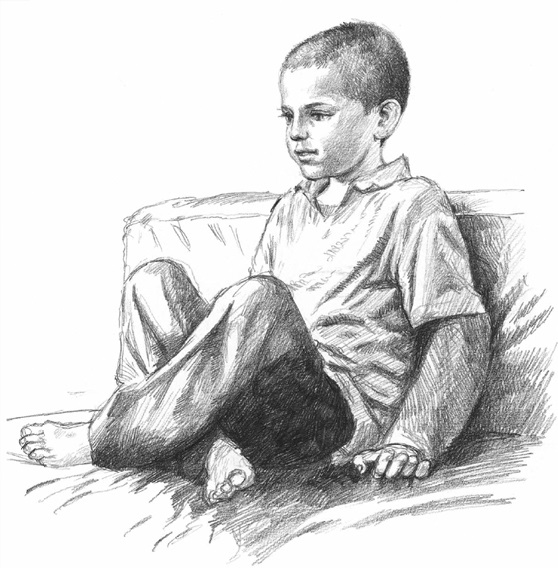
When you first start to draw the most obvious tools to use are pencils, since you will have used these since you were a child and will feel very comfortable with them. Later on, when you are feeling more confident and preparing to take your drawing skills further, you will want to try a variety of mediums to see the different marks they make, enjoying the way you can expand your range of techniques. You will find drawing implements described on , with exercises to try them out on.
For your surfaces, you will need mediumweight cartridge paper, which you can buy in sheets or in a sketchbook. The latter will be most versatile, because you can take it around with you as well as using it at home. The sizes you will find convenient for travelling with are A5, A4 and A3 anything larger is unwieldy.
A drawing board to use at home can be bought ready-made from an art supplies shop, but its easy enough to make one cheaply by sawing it from a piece of MDF or thick plywood; an A2 size is most useful. Sand the edges to smooth them out and, if you wish, paint the board with either primer or a white emulsion to protect the surface against wear and tear. To attach your cartridge paper to the board, traditional clips or drawing pins can be used, but I prefer masking tape, which is light, easy to adjust and doesnt seem to damage the paper if it is used carefully.
Whether you draw sitting down or standing up, you will need to have your paper surface at a reasonably steep angle. If you want to draw standing up, which is usually the most accurate way to draw from life, you will need an easel to support your drawing board unless you are working with a small sketchbook. You can buy small folding easels or larger radial easels I prefer the latter. If you like to draw sitting down and havent got an easel, you can support an A2 drawing board on your knees and lean it on the edge of a table or the back of another chair.


No matter whether you are using an easel or more informal support, your sight line should be such that the part of the drawing you are working on is directly facing your gaze. If you are looking at the surface from an angle oblique to the paper, you will draw slight distortions without realizing it until you step back and see the drawing more objectively. Keep the grip on the pencil, or whatever implement you are using, fairly light and relaxed you dont need to hold it in a vice-like grip. Also try different ways of drawing with the pencil, both in the normal pen grip and also in the brush grip, especially when you are drawing standing up the more vertical your surface, the easier it is to use the brush grip.
Keep relaxing your shoulders, arm and wrist a smooth, easy action is more conducive to good drawing. If you realize your movement is becoming anxious and constricted, stand back from the easel a little and work with sweeping strokes until you feel your action loosening again. As a beginner its all too easy to become tense, perhaps through worrying that you are about to spoil a drawing that has been going well so far, but remember you are doing this for pleasure! The exercises in this book should help you to enjoy the learning process and concentrate on your progress rather than your mistakes.

 LESSON
LESSONThis lesson is primarily designed for people who havent done very much drawing, but even if you are already quite practised you may find that carrying out the exercises shown here is a good way to loosen yourself up for what follows. The main point of them is to work on the basic skills necessary to draw anything with some degree of verisimilitude. The practice of making marks, which after all is what drawing consists of, never loses its usefulness however accomplished you become.
Font size:
Interval:
Bookmark:
Similar books «Drawing Class: Learn to Draw in Just 12 Lessons»
Look at similar books to Drawing Class: Learn to Draw in Just 12 Lessons. We have selected literature similar in name and meaning in the hope of providing readers with more options to find new, interesting, not yet read works.
Discussion, reviews of the book Drawing Class: Learn to Draw in Just 12 Lessons and just readers' own opinions. Leave your comments, write what you think about the work, its meaning or the main characters. Specify what exactly you liked and what you didn't like, and why you think so.

